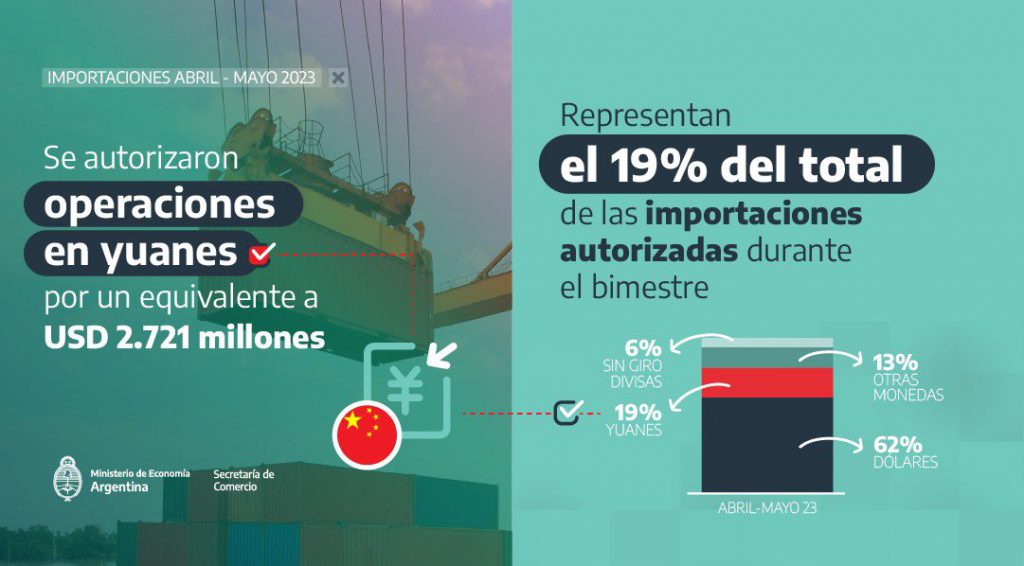The decline in reliance on the U.S. dollar is becoming evident as the BRICS nations take proactive measures. This group, comprising Brazil, Russia, India, China, and South Africa, is actively promoting the use of alternative currencies and exploring the development of a potential new currency, moving away from the dominance of the dollar. BRICS influence continues to expand, especially in Argentina. This is because a major chunk of Argentina’s imports was carried out using the Chinese yuan.
Argentina made a significant shift in its import transactions by carrying out 19% of them in Chinese yuan. This was done during the months of April and May. To ease these payments and preserve its dollar reserves, the country used the Chinese swap line, approving a total of $2.72 billion in Chinese yuan for this purpose. Commerce Secretary Matias Tombolini noted the use of the Chinese yuan in Argentina to diversify payment options. Tombolini further believes that this shift boosts the economic outcome of the country.
The Commerce Secretary further added,
“The alternative of imports in yuan strengthens our reserves and improves the outlook for net reserves, giving us greater freedom and ability to operate to intervene against those who speculate on the economic situation.”


How is this benefitting Argentina?
Given Argentina’s struggles with inflation, the country took measures by making use of the $10 billion Chinese swap line. The swap line was set up through a bilateral meeting. This was between Argentine President Alberto Fernandez and Chinese President Xi Jinping in 2022. This move aimed to provide Argentina with a reliable financial tool to address its inflationary challenges and enhance economic stability.
By growing the swap line to nearly $20 billion, with $10 billion available for lax use, Argentina was able to leverage these added resources effectively. This enabled the country to blend the Chinese yuan as a significant currency within its internal import share system. As a result, Argentina could tap into the benefits. This was carried out by the increased availability of yuan-denominated funds for handling its import operations. Additionally, it looks like BRICS influence and its de-dollarization initiative were gaining a push here.





